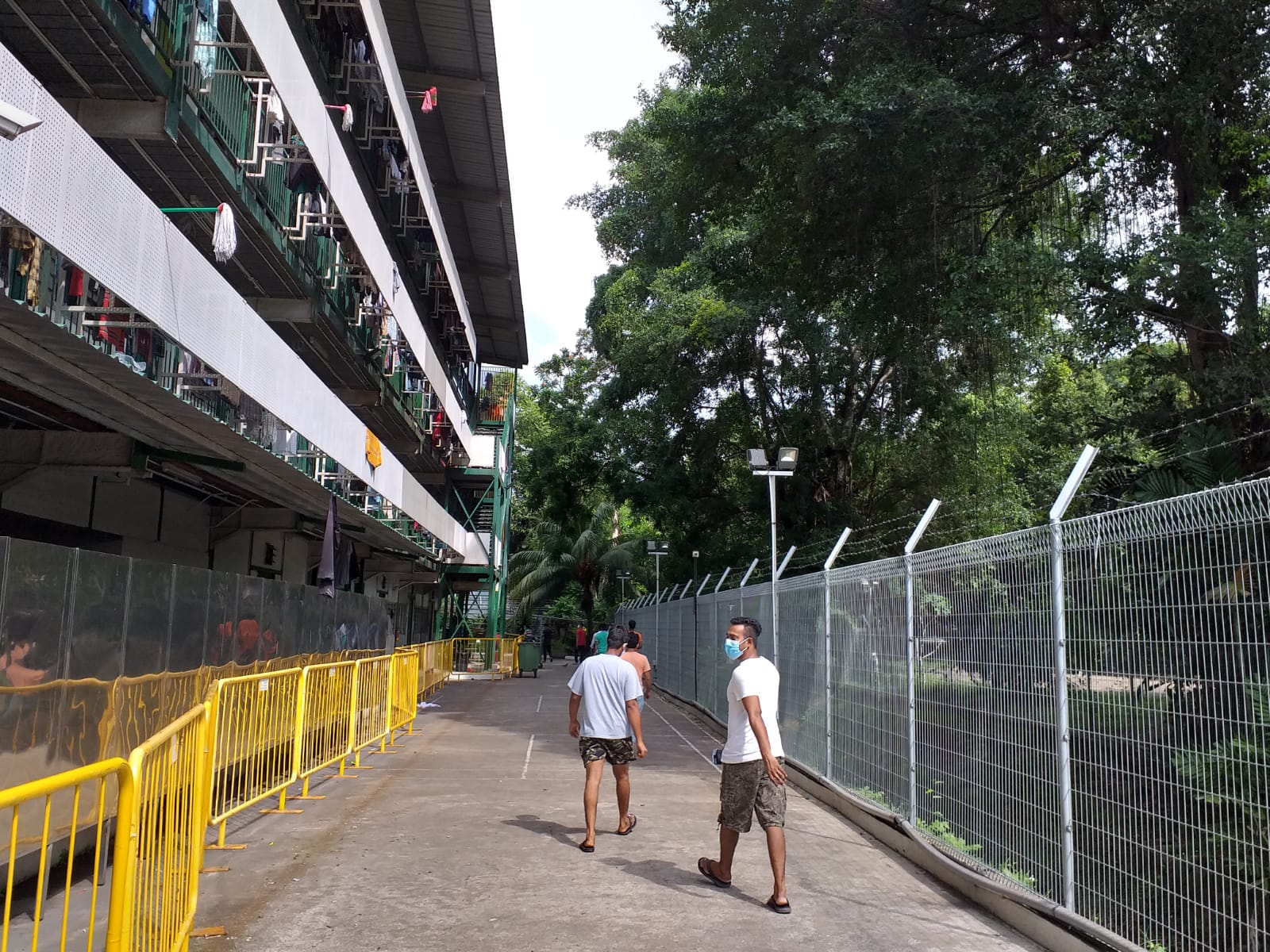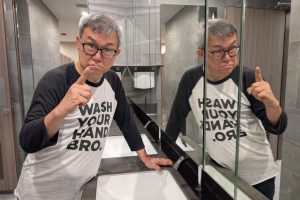The government has been taking active and urgent steps to respond to the migrant worker dormitory crisis, and has committed to safeguarding the welfare of Singapore’s migrant worker community. Many in the migrant worker community have been heartened by Prime Minister Lee’s statement broadcast on national television, and Minister for Manpower Josephine Teo’s video message to the community. Just yesterday, the government announced that migrant workers and domestic helpers will be given 1.3 million reusable cloth masks.
These new initiatives are crucial in addressing the gaps that have emerged in the provisions required to support migrant workers. However, some critical gaps remain unaddressed—there is still an urgent need to reduce dormitories’ density, to step up testing measures, to direct more resources towards resource-poor factory-converted dormitories (FCDs) and migrant workers who live in temporary quarters, and a need to address information and coordination gaps.
A total of 7,000 migrant workers have already been moved out of their dormitories or housed separately. However, as a statement published by the Humanitarian Organization for Migration Economics (HOME) noted, “the 7,000 workers who have been moved out represent less than 1% of the total migrant workforce, and are a tiny fraction of those at risk.” Such calls have been made not just by migrant worker NGOs, but by community-based social media pages like majuritysg as well, who have called for volunteers to help MOM and the SAF in the relocation of migrant workers.
Many other migrant workers remain confined to their rooms that still house 12 – 20 people, which exacerbates the spread of the virus and makes practising social distancing a genuine difficulty. Said Alex Au, Vice-President of TWC2 in an interview with the Straits Times, “Current measures may not be adequate … You really have to move people out, because the dormitories themselves, the rooms, are not really safe spaces anymore.” In the same interview, Dr. Leong Hoe Nam, an infectious disease specialist at Mount Elizabeth, echoed Au’s views when he examined the issue from a medical standpoint, saying that having 1 – 3 people per room would be ideal to cut down risks of transmission.
Some migrant workers we talked to also expressed frustration that dormitory density had not been reduced earlier, having seen first-hand how one infected roommate would quickly become many.
Fear and uncertainty has also spread among the workers, taking a toll on their mental health. Zakir Hossain Khokan, 41, said that one of his friends told him to “take care of his wife and son if he were to die.” To reassure workers, perhaps ambassadors—preferably migrant workers themselves—can be appointed peer counsellors in each dormitory to reassure their fellow workers. We understand that the Migrant Workers’ Center has already rolled out such a program in many dormitories, but not all dormitories are currently covered.
Of course, as Dr. Leong also noted, to find accommodation for the 200,000 over workers in the dormitories overnight, or even in three to four weeks, is a “big, big, tall order.”
To help reduce the density of dormitories immediately, the private sector should step in. A recent statement by HOME also called for increased involvement of community partners. This may include roping in the F&B industry to ensure food security for underprivileged groups like migrant workers, whilst preventing the industry from going under, as suggested by NMP Anthea Ong in her parliamentary address on 6 April. Employers who are able to repurpose factories or other spaces into makeshift dormitories should also step up during this critical period.
While small businesses may not currently have the capacity to fund the conversion of their spaces into living quarters, perhaps these funds can come from larger corporations or the government, in the spirit of #SGTogether.
Indeed, some employers have already done so. Natural Cool, an air-conditioning company, constructed a makeshift dormitory for workers, replete with mattresses, power plugs, and air-conditioning. Said Mr Cai Bing Cong in an interview with Zaobao, “MOM has put all the processes in place, making it convenient for employers to solve the problem at hand … we must take care of them.” Their efforts deserve to be celebrated, and we hope other employers follow suit.
Step Up Testing Efforts
With the huge influx in the number of cases, there is also an urgent need to step up testing for migrant workers. According to a recent statement by TWC2, current testing efforts are insufficient if we want to flatten the curve in dormitories.
For example, Zakir, who lives in Cochrane Lodge II, also told us that on 16 April, his roommate was confirmed to have tested positive for Covid-19 on his second test. Following that, there were no instructions on whether they were to move to the quarantine block. The next day, Zakir reported symptoms to the officer and was taken to the hospital (he was also diagnosed with Covid-19). As of Saturday, 18 April, the other occupants in the room have not been tested for the virus, and it remains unclear if there are plans for tests to be done.
While Singapore’s testing capacity may be under strain, perhaps TWC2’s suggestion of “pool testing” could help alleviate capacity concerns. With pool testing, swabs obtained from a group of people may be submitted for laboratory testing as a single sample. If the group tests positive for Covid-19, individual testing may be done afterwards to narrow results.
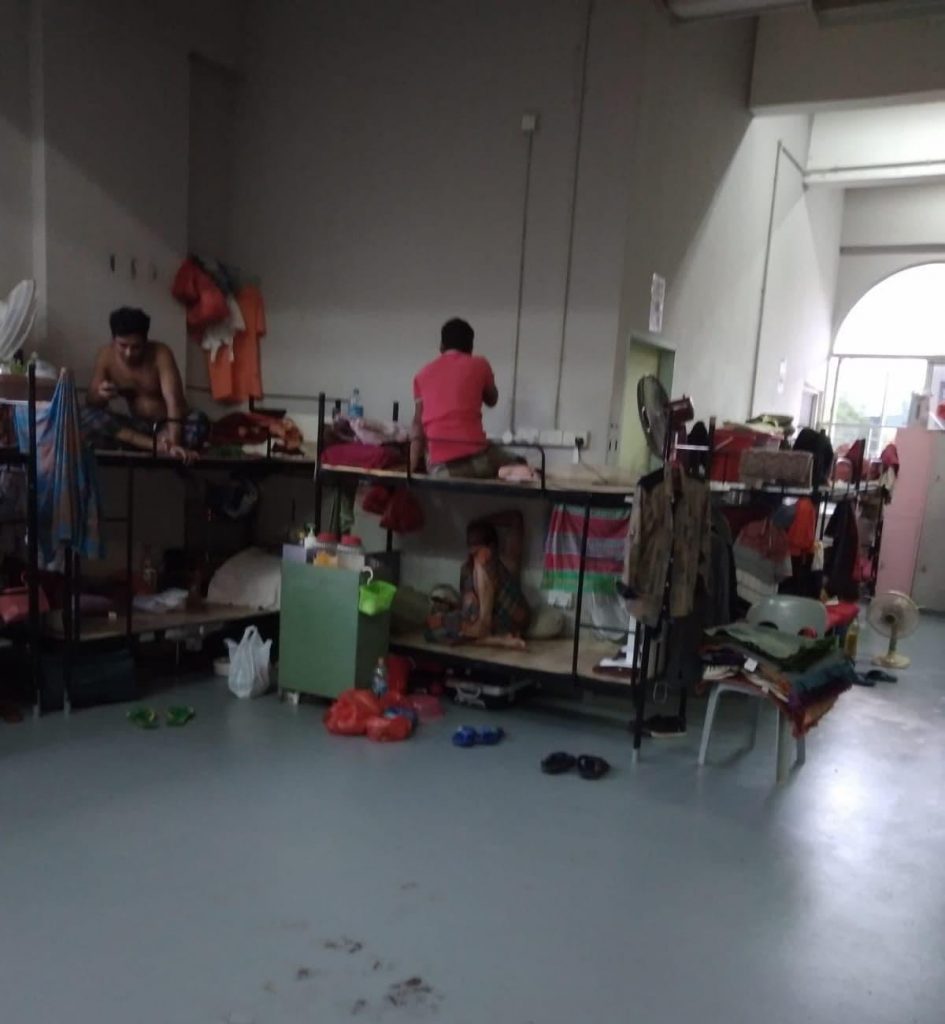
Currently, it seems like the largest dormitories such as S11, Westlite Toh Guan, and Sungei Tengah Lodge are the most well-equipped to respond to the crisis, and thus able to comply with the measures outlined in MOM’s advisories issued on 11 April, 13 April, and 16 April. Under these advisories, dorm operators have been asked to comply with Circuit Breaker measures, whilst employers have been asked to ensure that workers in gazetted dormitories receive their salaries on time.
However, smaller, factory-converted dormitories (FCDs) remain under-resourced, and many dorm operators find themselves struggling to enact the social distancing measures recommended by the government. According to Tang Shin Yong, a volunteer with SG Accident Help Center, a non-profit that directly assists migrant workers living in FCDs and shophouses in the Tai Seng area, “It is just not possible for migrant workers living in shophouses to practice social distancing, with 35 men in one room, two toilets, and no kitchen.”
Kokila Annamalai, a local community organiser, notes that it is not just FCDs that have been under the radar, but “the ones that are really vulnerable are temporary quarters and those who rent on the free market.” To their credit, the Migrant Workers Center, as well as other people in the COME coalition, have already flagged these issues, but the challenges of locating and reaching out to these disparate groups may explain why their needs continue to be unmet.
Of course, not all FCDs are problematic living quarters. According to Belal Hasan, a store supervisor who lives in one himself, his living space is large enough with fewer than 30 people sharing 6 toilets. Social distancing measures are observed on a daily basis, and their employer also takes active steps to care for them, such as taking their temperature twice a day. The key here is in accounting for FCDs that are vulnerable, and offering them targeted help.
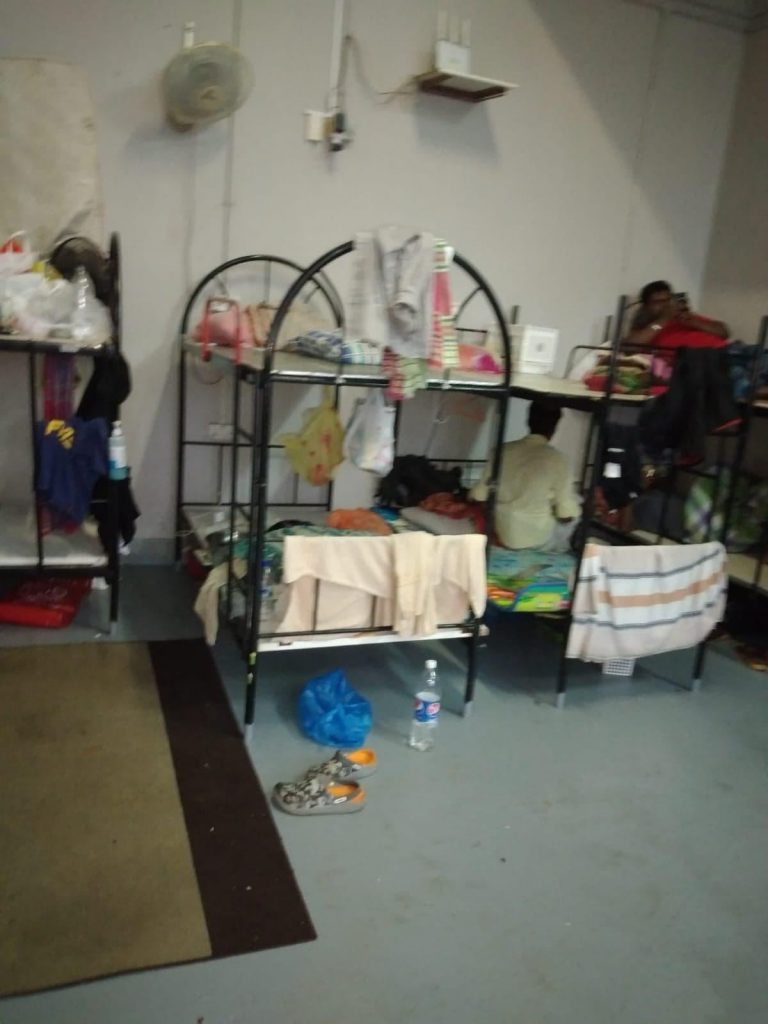
For now, the government has already been coordinating with various migrant worker NGOs and coalitions. Currently, there are two coalitions: the Covid Migrant Support Coalition (CMSC) and the Collective of Migrant Efforts (COME). The COME coalition, led by the Migrant Workers Center (MWC), has been spearheading the large-scale distribution of reusable masks to the dormitories and doing extensive food distribution together with AGWO (Alliance of Guest Worker Organizations). The CMSC group, on the other hand, has been active in organising the delivery of meals and care packs.
With such large ground to cover, it is perhaps inevitable that coordination and communication gaps arise. Coordination gaps include those between the government, dorm operators, employers, and NGOs. For example, workers in Cochrane Lodge I and II still have not received reusable masks (as of the time of writing), unlike their counterparts living in other gazetted dormitories.
Many of the coordination issues stem from the fact that many actors are involved, and that the urgency and suddenness of the crisis has left many actors scrambling within their own organisations to respond as swiftly as they can. Coordination across different bodies is harder still, especially when the diversity of NGOs and state-affiliated bodies involved make collective organisation a challenging feat. These are all understandable and teething issues, and more support should be given to members of the coalition to ensure that they are able to assist their constituents on the ground.
To address communication and coordination gaps (and at the risk of promoting further bureaucracy), perhaps the government should take the lead in setting up a taskforce just to coordinate across all the relevant parties—namely, the government, the different NGOs and NGO coalitions, the dorm operators, and the employers. Ideally, this taskforce would also have a few migrant worker representatives from each dormitory, for they know what is happening on the ground, and are best placed to aid the “FAST” teams deployed to each dormitory. Of course there might be good reasons why such a task force might be counterproductive, for it undermines the agency and autonomy of NGOs, even if pooling resources might lead to some efficiency gains.
Some form of coordination between the government and NGOs has already been piloted according to a press release by MOM on 17 April. However, it seems like government-NGO collaboration is limited to only a few organisations for now—the Alliance of Guest Workers Outreach (AGWO), It’s Raining Raincoats (IRR), Geylang Adventures, and Crisis Relief Alliance. To truly reap efficiency gains from coordination, all NGOs should be roped in to help, not just the selected few.
Debbie Fordyce, President of TWC2, noted that TWC2’s advice and experience have not been drawn upon during this pandemic. In times of crisis, we should enable all groups with capacity to contribute to the collective effort, particularly as these groups have specialised expertise and pre-existing networks that could aid in the governments’ efforts to deliver services quickly, or provide casework assistance.
Meanwhile, other NGOs can double up and plug gaps wherever possible, whilst maintaining close contact and open feedback channels for the workers. Indeed, many NGOs and individuals have already been stepping up to fill the communication gap. For instance, NUS medical graduate Sudesna Roy Chowdhury took it upon herself to set up a website for Bengali translations that greatly facilitated medical workers interacting with migrant workers. Migrant Workers’ Centre also has a series of videos in Bengali on precautionary measures workers should take.
Information gaps between the inter-agency task force and the workers also need to be plugged. This includes information about amenities and support: HOME’s recent statement noted that, while new amenities such as Wifi access have recently been made available in dormitories, many workers “have not been told”.
This suggests that a lot of information already exists, but remains scattered across various online portals and well-meaning resource guides published by NGOs and community organisations. Understandably, in times of crisis, workers seek immediate reassurance, and the confusion from information gaps can lead to further and preventable transmission.
To address this, perhaps we can consider developing a centralised database of information about common questions relating to Covid-19, and how it might affect different aspects of their lives (health, salaries, mental health and so forth), translated into common languages amongst the migrant worker community. We should also be training dormitory operators on what and how to communicate effectively and respectfully to migrant workers, since they are on the ground and directly interact with migrant workers.
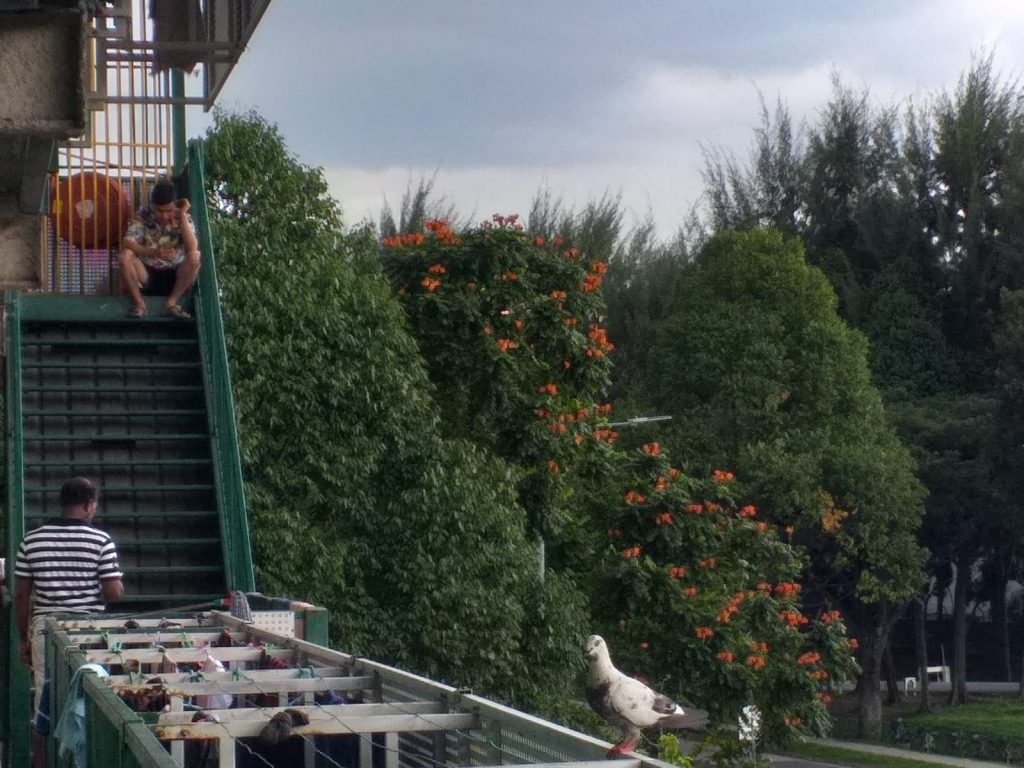
We are heartened by the swift response by the government, and the outpouring of support by both NGOs and the general public. Many community groups and individuals have rallied during this crisis to support migrant workers, and many migrant workers themselves have expressed gratitude for such widespread support.
However, some critical gaps remain in the delivery of provisions, and steps should be quickly taken to plug them. To reiterate, we should quickly reduce the density of dormitories, step up testing, make sure migrant workers living in FCDs and temporary quarters are also taken care of, and close communication and information gaps. It is best to have open communication, such as accounting for the types of measures and provisions available in each of the 43 dormitories. This facilitates not only the NGOs who are involved, but also the general public who are interested in donating and playing a part.
This is not to negate the massive efforts of the government and other groups have been working on the frontline, round the clock, over the past two weeks to move several thousands of migrant workers into converted isolation quarters such as HDB blocks, unused void decks and car parks, deliver food to over 7,000 migrant workers, and distribute more than masks and sanitiser to the migrant worker population.
Given the scale and severity of the situation, to rely on the government alone to address these issues is unfair. Many NGOs themselves have been working tirelessly to plug these gaps, and it is time for the private sector to also step up and do their part by assisting the government and NGOs. Community efforts, while small, can also be helpful, especially in addressing other gaps not highlighted in this article: migrant workers’ need for mental health resources, community, and of course, love—from the Singaporean community or elsewhere.
There has been much talk about how Singaporeans can show solidarity to our migrant workers, who are the backbone of our society. To truly achieve #SGUnited, it is time for all sectors of society to come together to support them, and to help plug these gaps.

